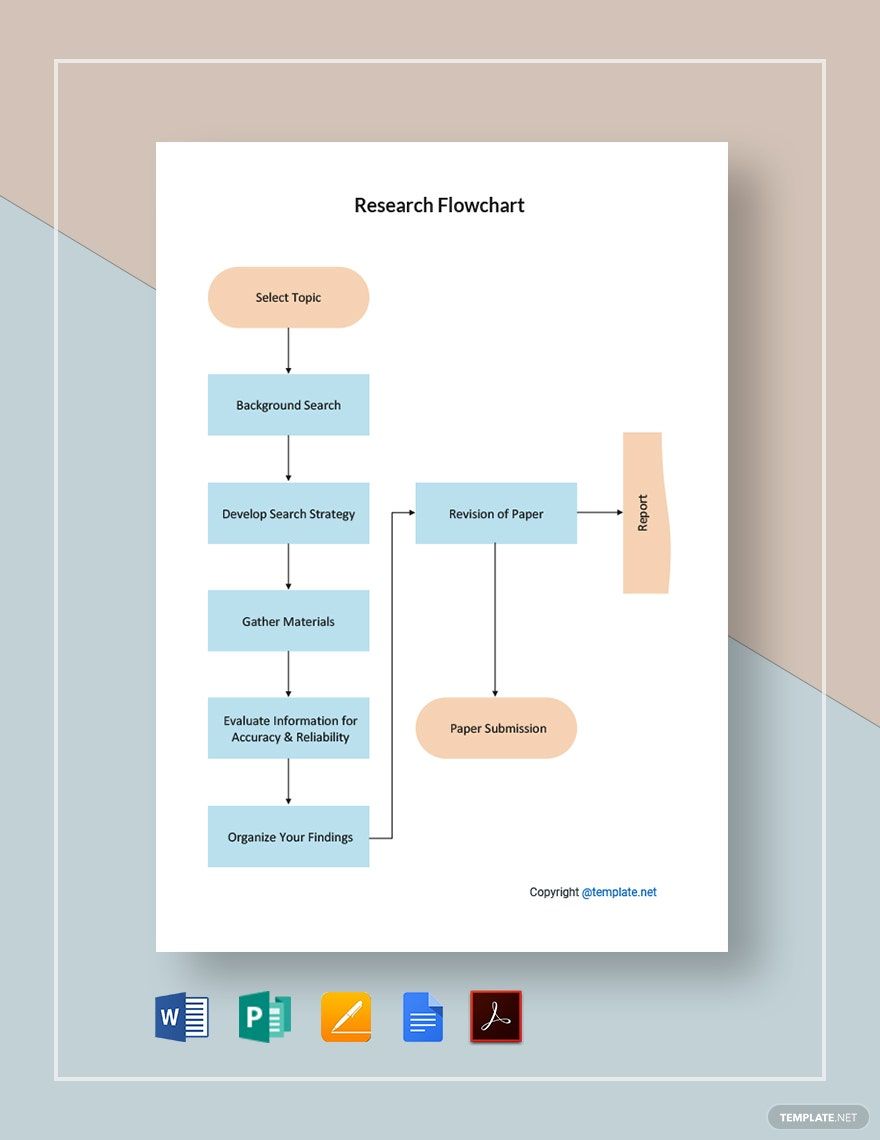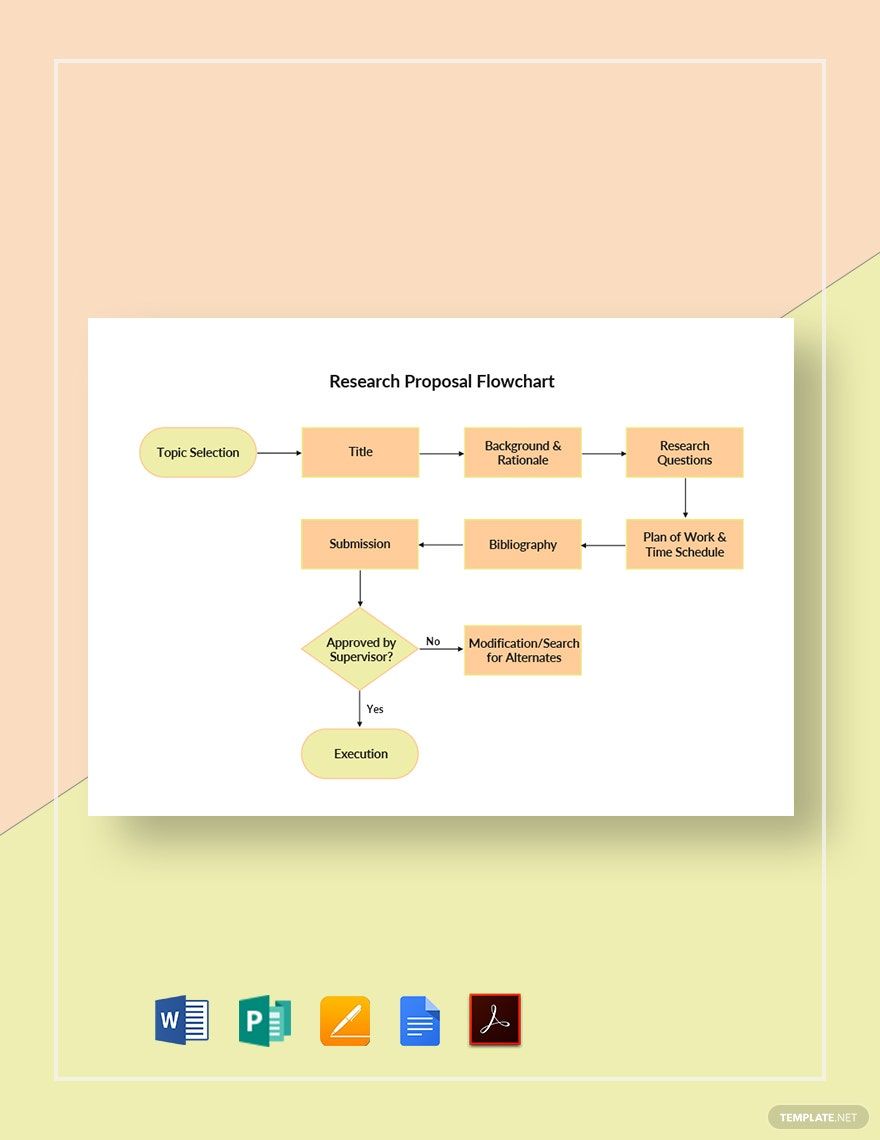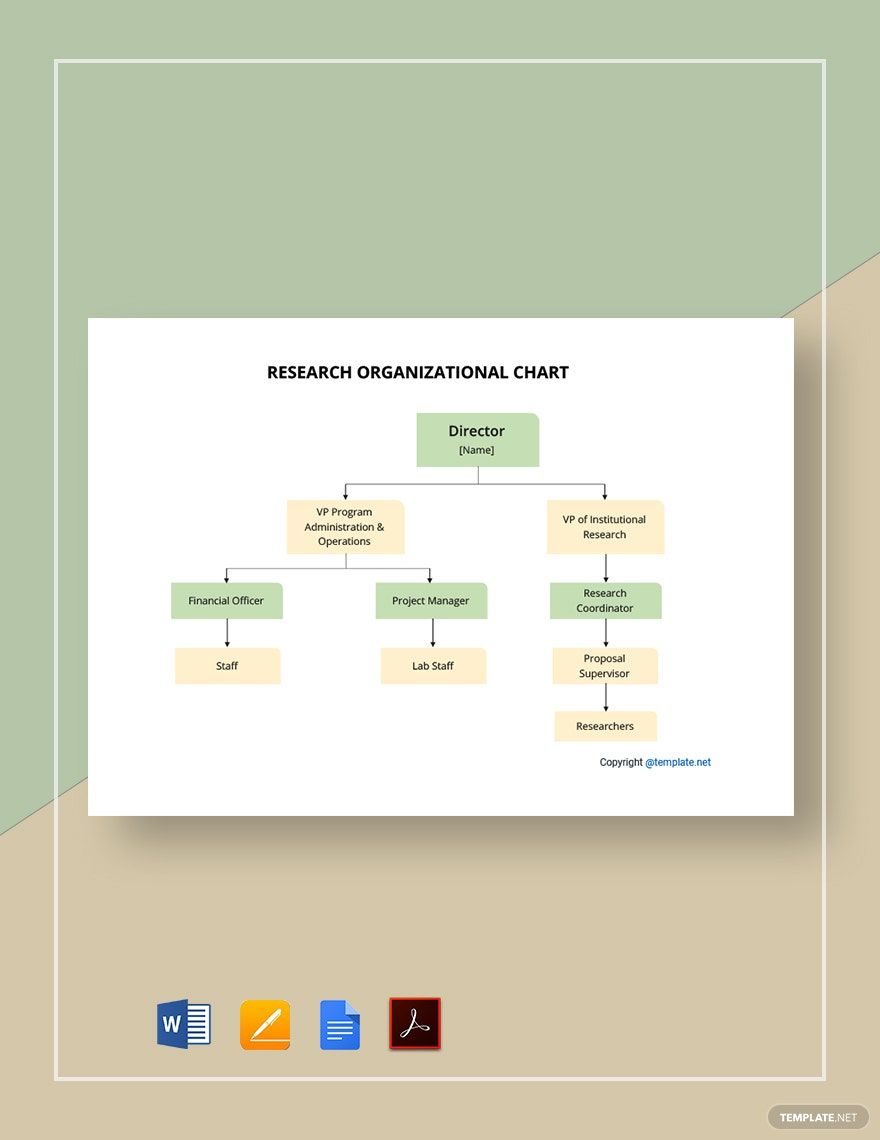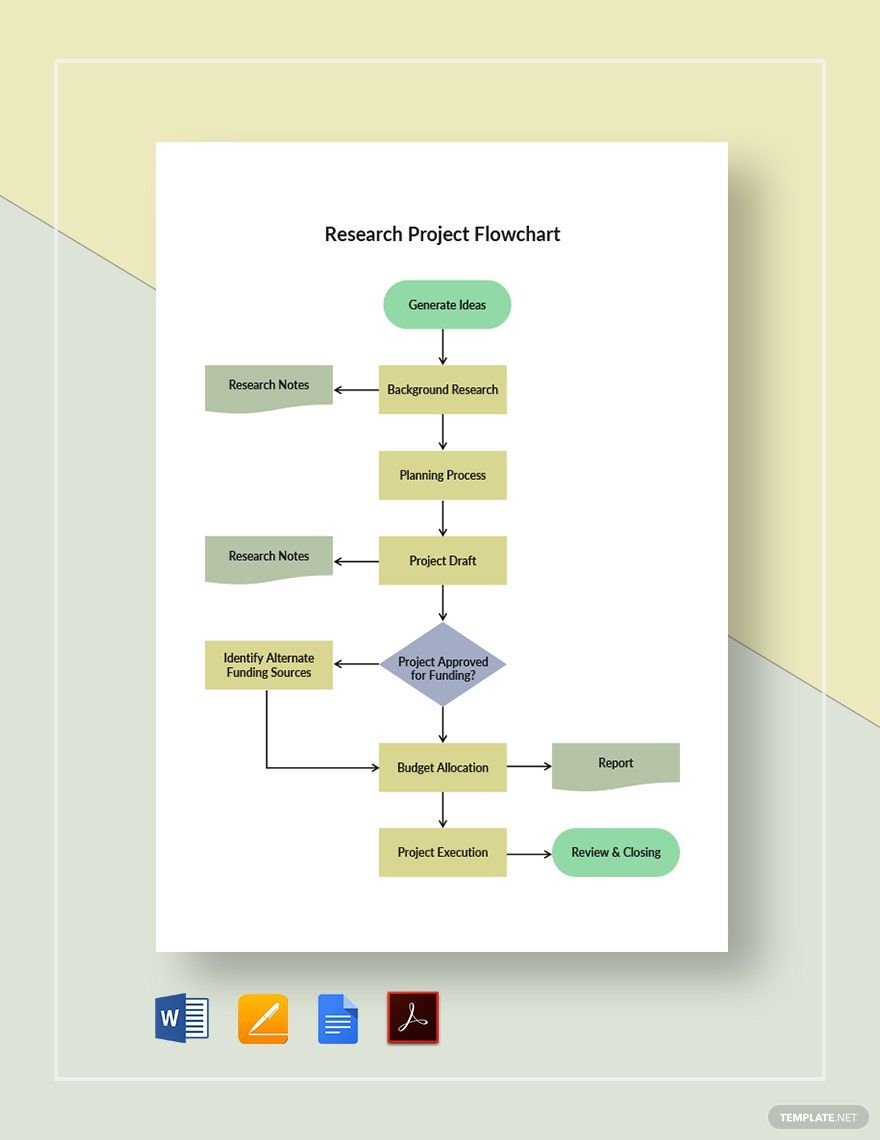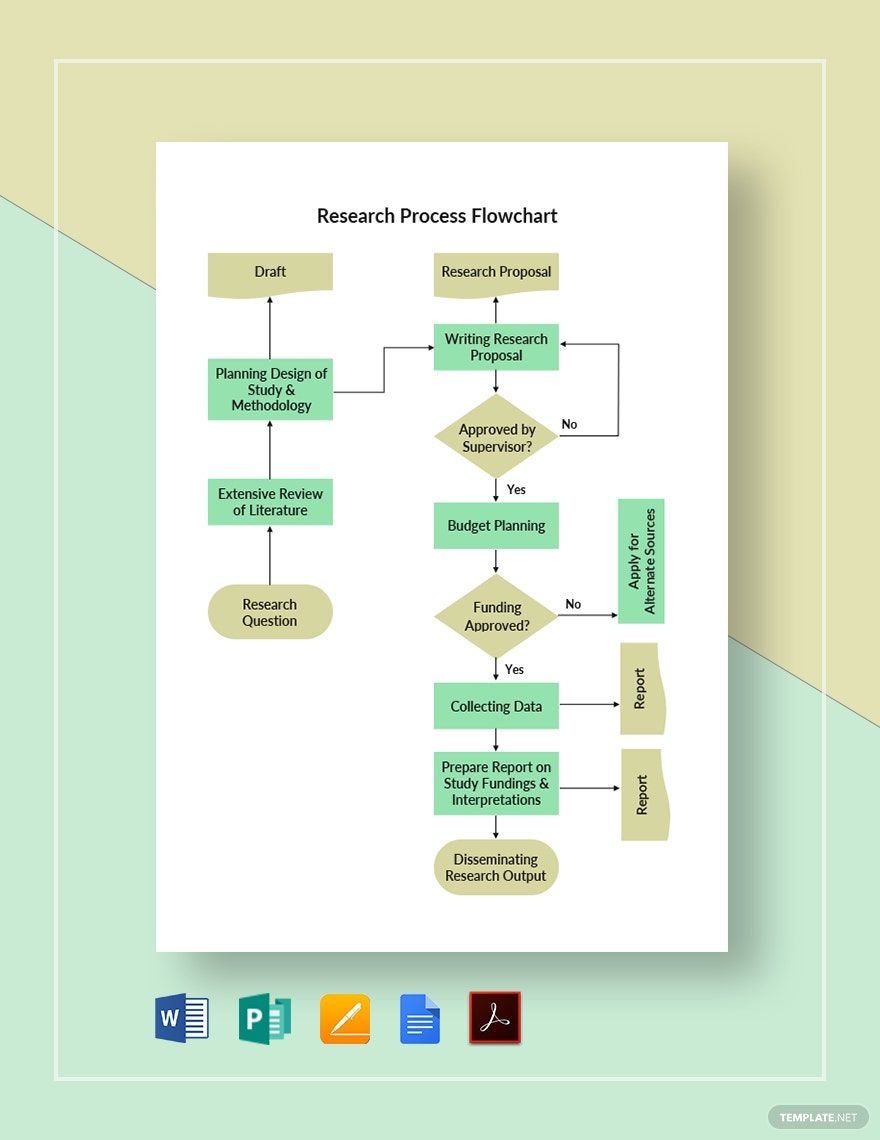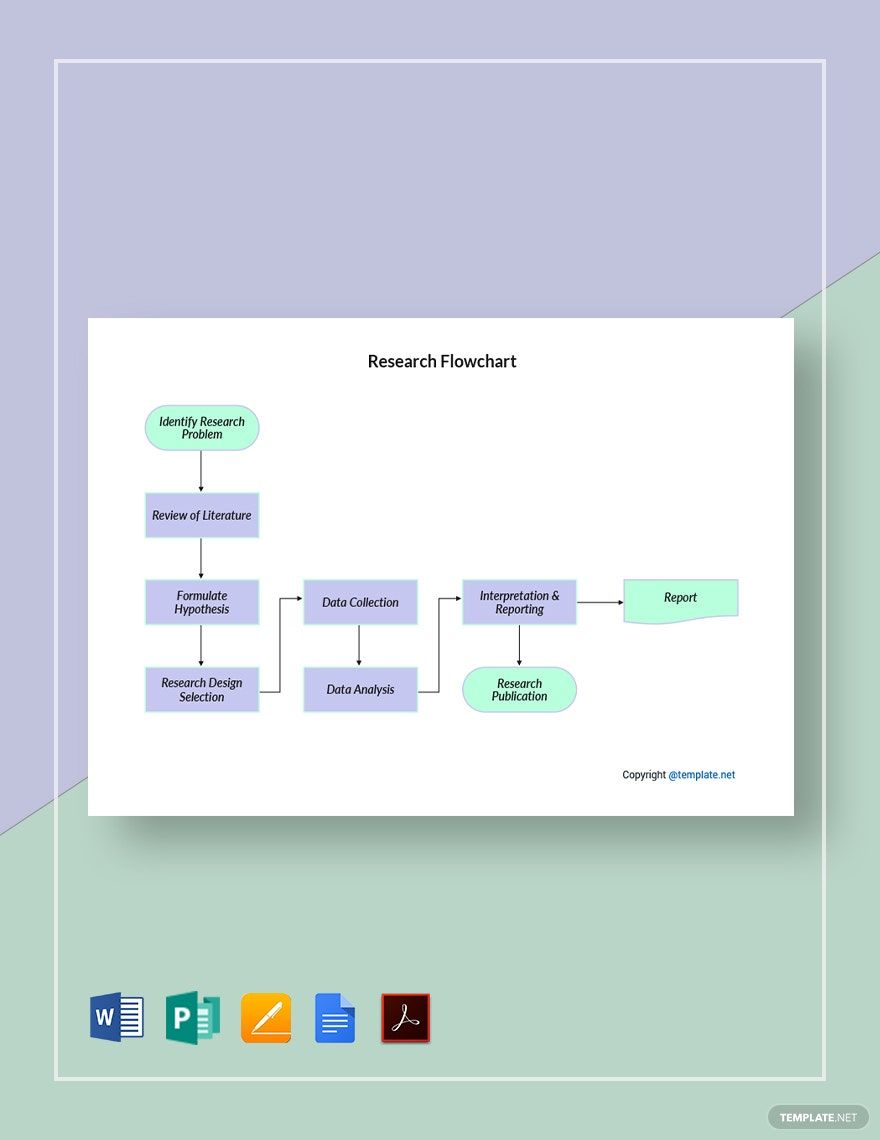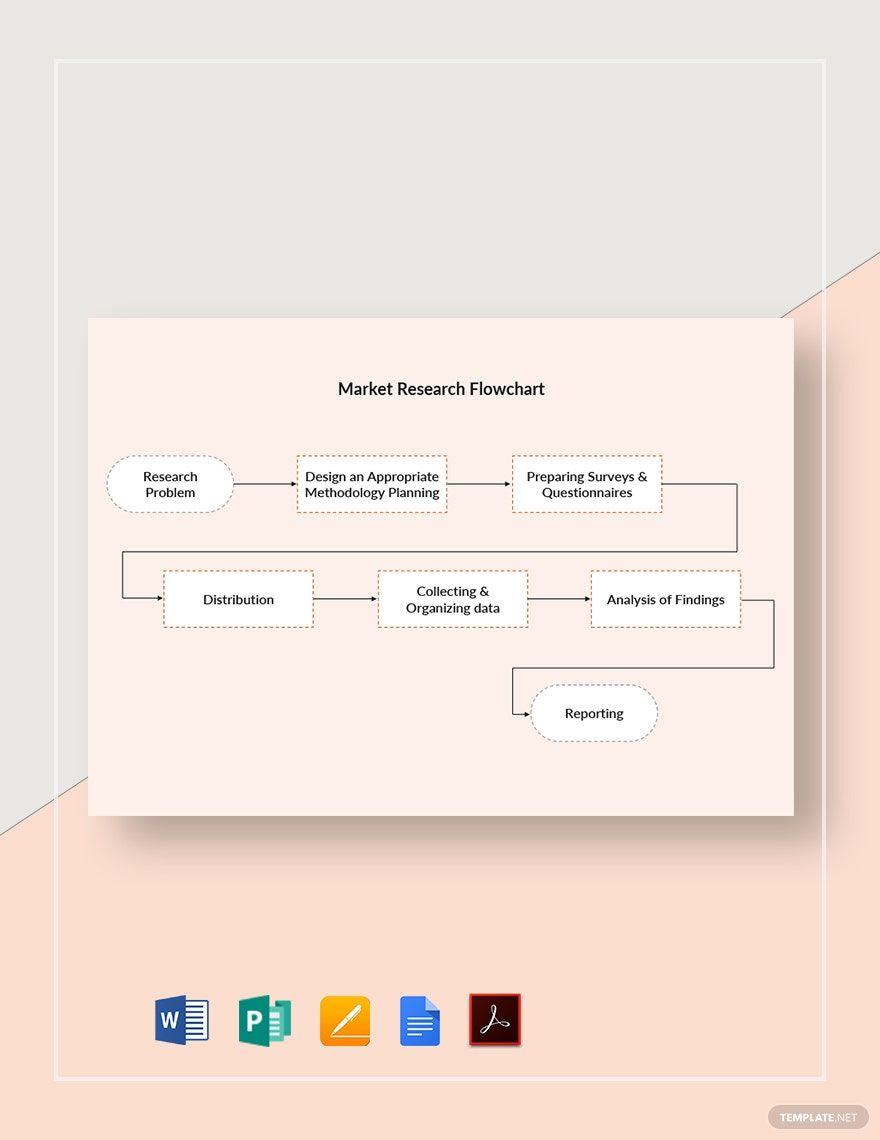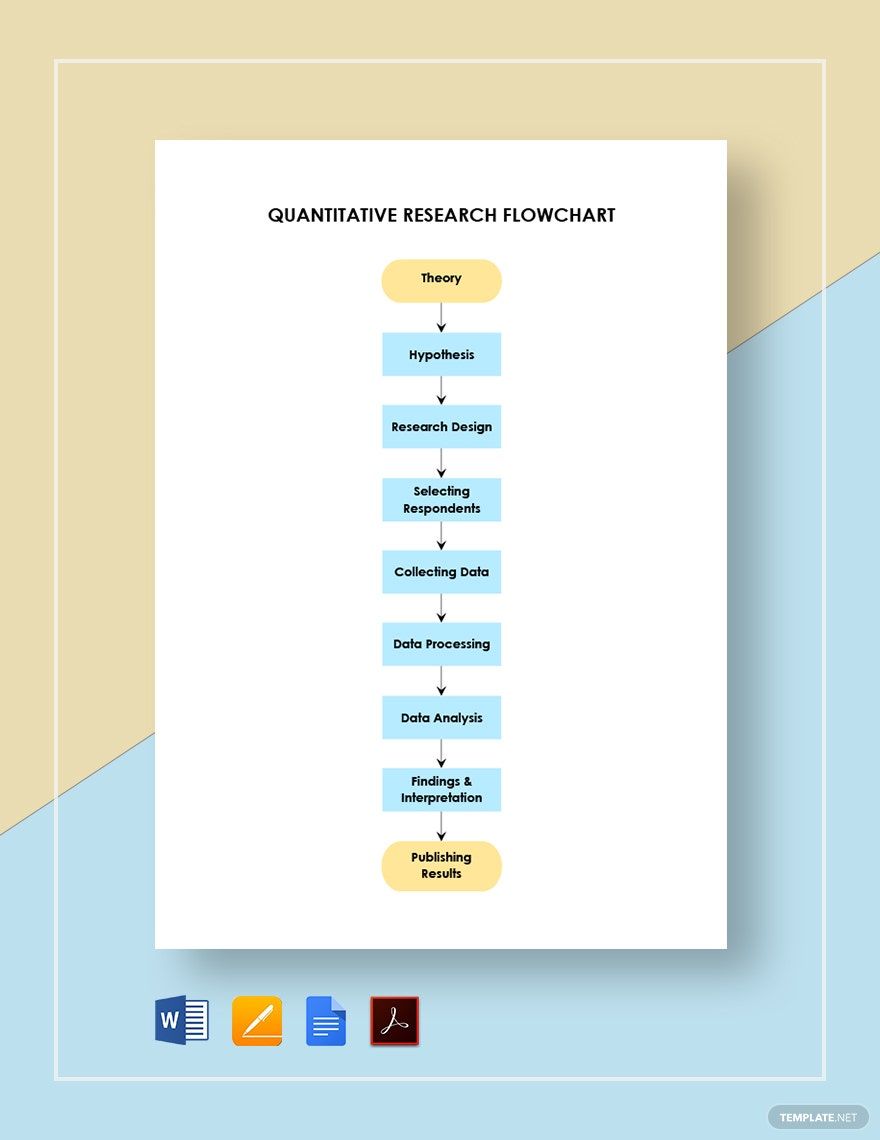Your ability to discover new things is a catalyst in tomorrow's economy. Since the beginning, people keep on learning and innovating new trends of products and services, which made up of pieces of information collected from a broader sense of science and technology. Even the DNA, building blocks of life discovered by Watsons and Crick, was found from long-time research inherited from one generation to the next generation. We're naturally equipped with knowledge and skills to explore and discover new things. With the advent of technology, we created a new research template that suffices your business needs. Our research flowchart templates were made specifically for you. We remain truthful with our mission to deliver high-quality editable templates, 100% customizable, professionally engineered flowchart. Our tools are available for download in any device with several formats: Microsoft Word, Apple Pages, Adobe Photoshop, Microsoft Publisher, and Google Docs.
How to create a research flowcharts template in Word?
Research is inevitably considered as a regular habit today. From different fields, either business or business sectors, research is essential. Wherever you go, these all things you enjoy is a product of vivid research by somebody who dreamed for great results. We can create a new product from a raw data sheet, to filter out the essential data needed for inventing new products and services. Sometimes, the research process gets intertwined and confusing to follow, so presenting you with a precise way to do your research is useful through creating a research flowchart. The research flowchart is a summary of steps to squeeze out essential information to develop new products and services. We list down all elements that would help you create a relevant research flowchart, which chronologically arranged as follows.
1. Proposed Topic.
Choosing a topic for your research helps to sight content, and then, you can start sourcing for information from there. It's important to sight the right subject so you would know where to go next on your research. You can present a research proposal to your Mentor, who will further assist your research topic and grant your request. The approval of your study will mainly depend on the budget proposal and if the research is achievable with the available resources. In line with this notion, we purposely designed a wide array of research templates that you can choose from, from sample market research to quantitative research template.
2. Methodology Used.
Your methodology and principle will depend on the nature of your chosen topic. You can create a simple outline of the standard research plan to get essential details that you can incorporate on your research flowchart. They were many principles and methods you can use once you conduct your research. We showcase different research templates that can significantly contribute to your plans, such as a printable survey, quantitative analysis, and execution plan. Your final output is affected by your chosen methodology, as your flowchart might bring a confusing direction on your diagram. Your chosen methodology should be relevant to the topic, cost-effective, and result-oriented steps. Also, your data collection strategy depends on the approved method.
3. Data Sourcing.
Since we already have a specific type of methodology, it's time to source and collects raw information. Raw data can be funneled out from reliable book sources with credible literature review, from recommended websites, and from target groups who will highlight the essence of the research. Together with your precise data collection, obtaining relevant information that can contribute to your flowchart is obtainable. The collected details should undergo data analysis to garner procedures helpful to your diagrams.
4. Experiment on your Flowchart.
To create a comprehensive research flowchart, you can activate your Albert Einstein's creative skills through shifting shapes for better interpretations and molding better directional signs for easy to follow research flowcharts. You can add color to each form, and identify which steps need to be shaded the same to categorize the degree of importance to the diagram. Since our flowcharts are 100% editable and customizable, you can drop and drag each shape to come up with desirable direction. Your color shading should have equal boldness and intensity because any slight mistakes might bring another interpretation to your flowchart.
5. Proofread Steps.
At this stage, we have already obtained the final flowchart. You can try to use your diagram if every part is according to your initial outline. If there would be any unapplicable steps, don't hesitate to remove it away. Any unnecessary steps might bring confusion and would not help you in obtaining desirable outcome. Each step should be concise, consistent and relevant to the topic, just like your initial fact sheet. You can supplement the result with graphs showing the result of the research to enhance interpretations.
6. Print Flowchart
After running your flowchart through a careful review, you may consider research analysis to come up with brilliant content on your diagram. When printing out your flowchart, you may consider answering, Whom and Where. Posting your flowchart in a particular area and use it for a long time, we need to choose a durable piece of paper with specific paper weight or GSM. The standard GSM for this purpose are between 130 to 170. These flowcharts are available in portrait orientation too.


